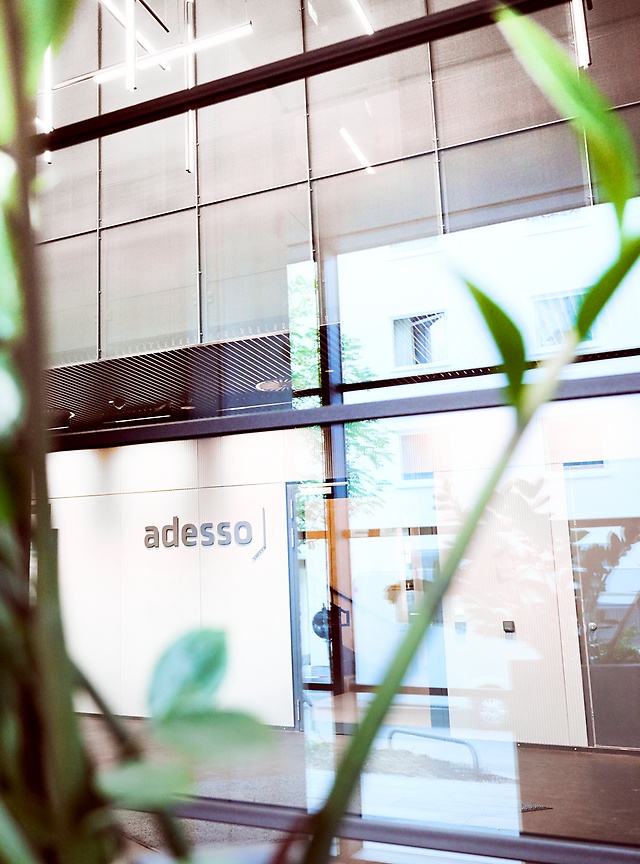7. July 2023 By Juan Carlos Peñafiel Suárez
Is a single source of truth (SSOT) needed in the laboratory?
The SSoT - i.e. the only reliable source of information - is a concept in which a company's data is stored centrally.
Laboratories are working hard today to solve the problems created by the exponential increase in data. A variety of concepts and technologies are currently under development that promise to help laboratories meet these challenges. The goal is to design the lab of the future that is efficient, fully digital and highly automated. One approach that shows real promise is single source of truth (SSOT).
SSOT, which involves having a single reliable source of information, is a concept according to which a company’s data is stored centrally. An alternative to the central storage of data is the central storage of references to this data. In both cases, the data must be clearly identifiable so that everyone in the company is able to access a single trusted source.
Why should laboratories deploy an SSOT?
Implementing an SSOT ensures that there is only one trusted source of information. This offers the following advantages:
- No duplicate work: Having only one data source ensures that only one version of a file is worked on. This eliminates duplicate work, which drives up costs since staff could be making better use of their time.
- Faster processes: In contrast to a laboratory environment where many data silos exist, the data in an SSOT is easier to find. This speeds up the processes because the data flow is continuous.
- Problems are spotted more quickly: Decisions can be made more quickly if the right data is always available and always up to date. Errors are detected more quickly as well.
- Improved communication: Since every employee works with the correct file versions, miscommunication can be avoided because everyone is on the same page.
- Better decision-making: Taking a data-based approach to making decisions is important for every company. All data in an SSOT is unique, true and accurate. Therefore, decision-makers can trust it and make better decisions.
- Enhances image of the laboratory: If the company manages its data better, this will be reflected in the product data. This in turn leads to better service quality, higher customer satisfaction and enhances the company’s image.
There is no standard solution for an SSoT on the market. Therefore, there is enough flexibility for laboratories to define their own strategy for the introduction of an SSoT. This can be designed in such a way that the investment in an SSoT is worthwhile in any case.
Steps to take to create a single source of truth (SSOT)
here are several ways to create an SSOT. As a general rule, the following steps are recommended:
- 1. Regulatory considerations and safety requirements must be taken into account from the very beginning. The requirements must be taken into account at all times in order to design the SSOT in a such a way that they are met.
- 2. Gain acceptance from all stakeholders. Once a decision has been made to introduce an SSOT, the decision should be effectively communicated at all levels. But that is not enough. All employees must also understand the technology and what purpose it serves. The best way to ensure this is by holding a training seminar or workshop where questions can be answered as well as discussed.
- 3. Identify data sources. An SSOT should include all data sources to ensure that all data is available in the SSOT. If not, the SSOT would not serve its intended purpose.
- 4. Digitalise and consolidate data. This step can be carried out before the decision to introduce an SSOT takes place. It is indeed recommended, since digitalisation by itself can lead to much higher efficiency. All data should be digitalised and consolidated at the latest when the decision to implement an SSOT has been made and the data sources have been identified.
- 5. Select software. There are many risks associated with an SSOT without software support, including human error, lack of traceability and lack of control. This makes software indispensable. It is important to precisely define the software requirements together with the IT department so that they are clear and understandable to all parties involved (specialist/IT department and software provider). It is imperative that the software has the functionality to pull data from any existing systems.
- 6. Define responsibilities. An SSOT requires constant tweaks and changes as new data sources emerge over time or old ones fall out of use. For these reasons, all employees should be responsible for ensuring that their data is processed and available in high quality. They should also define the criteria according to which data sets are used in dashboards and analytics tools. Ultimately, this data serves as the basis for decision-makers when making their decisions.
Is an SSOT really needed in a laboratory?
An SSOT can help in implementing data principles such as FAIR or ALCOA by increasing the quality of the data. It also has the advantage that all decision-makers have all the information from the various units at their disposal, allowing them to make data-driven decisions. But that still leaves the question of whether it makes sense to introduce an SSOT in the lab.
Before making any investment, every organisation should always ask whether it is worth the cost. And that is no different with an SSOT. We already described the benefits of SSOT above. Do they outweigh the cost of the investment, both in terms of time and money spent on the project? There are different ways to implement an SSOT. There is no standard SSOT solution on the market. That gives laboratories the flexibility they need to define their own strategy for SSOT implementation. This can be structured in such a way that an investment in an SSOT pays off every time.
Challenges associated with the introduction of an SSOT
When introducing an SSOT, you need to overcome a number of challenges to ensure the project is a success. These include:
- Involving all employees. An SSOT requires constant work. In all likelihood, new equipment or software will be installed, the company will continue to grow, new information systems will be introduced and so forth. Therefore, all these new processes need to be re-examined from a safety, health and environmental perspective. Staff are very important in making this possible. Which is why employee training is one way to ensure success. Detailed documentation is also needed, which is of great use for the lab and its staff as well as for audits.
- Data protection and access to data. Since all data is stored at one location, it should only be accessible to the responsible people since changes to data can have far-reaching consequences. It must also be possible to track these changes as well. Finally, there have to be backups available in order to recover the data in case it is lost.
- Collect data. An SSOT means not only eliminating duplicate records, but also storing useful data. It should not be a data repository, but a place where data is stored in high quality. For that reason, only relevant data should be stored in an SSOT. Furthermore, only data from official sources should be used for further analysis.
Conclusion
Single source of truth (SSOT), which involves having one single trusted source of information, is a principle of data storage where all data from different systems is stored at one location. An SSOT provides a number of benefits. For starters, it eliminates duplicate work and makes processes more efficient, ensures problems are detected faster and improves communication. However, one of the key benefits is that decision-makers can make more informed data-driven decisions because they have a good overview of the current state of the laboratory thanks to the SSOT.
Introducing an SSOT in the laboratory is therefore recommended. What the strategy for implementing an SSOT ultimately looks like depends on several factors, such as the size of the laboratory, the time frame, the budget and the IT infrastructure. Once all the data sources have been identified and digitalised, it is easier to analyse what benefits an SSOT will bring to the lab. In conclusion, it is important to note that the acceptance of every employee is very important when introducing a SSOT, since it is a constant, ongoing process that is shaped by each member of staff.
You can find out more about our portfolio in the life sciences sector on our website.
You can find more exciting topics from the adesso world in our blog articles published so far.
Also interesting:

